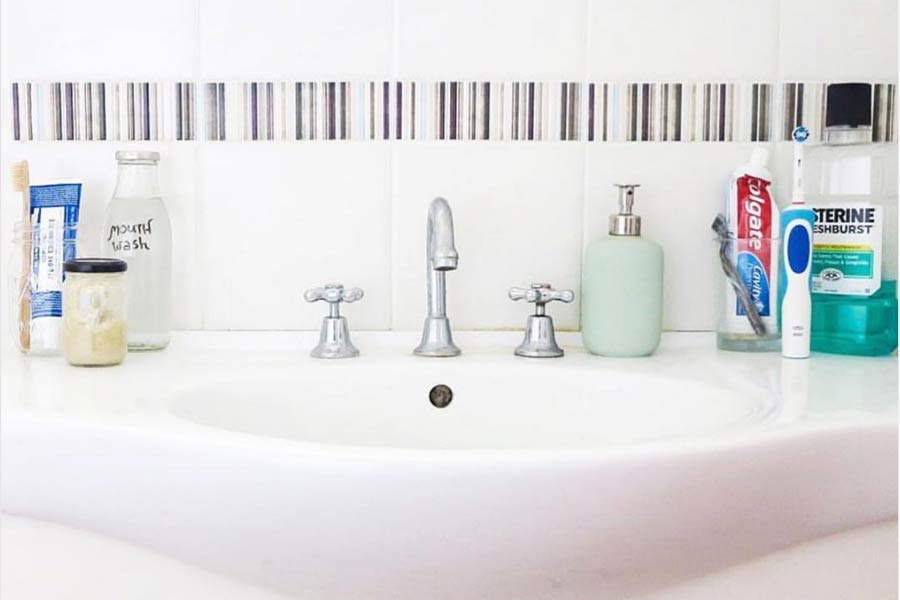
We are doing a series of blogs with tips on how to reduce your plastic waste. Some of the tips are not for everyone; the alternatives can initially be more expensive, but they may also save you money in the long run. This article is the second part of a two-part guide on how to reduce plastic in your bathroom. You can read How To Reduce Plastic In Your Bathroom – Part One here.
Welcome to part two of how to reduce plastic in the bathroom! Many of the items listed in these blogs can often go unnoticed in the average household and are not as famously ‘bad’ as plastic straws, water bottles or shopping bags. However, these articles aim to show that there are alternatives to things you might never have thought of to reduce your plastic.
This blog will be looking at alternatives for:
- Deodorant
- Razors
- Toilet paper
- Lotions
- Face scrubs
Deodorant
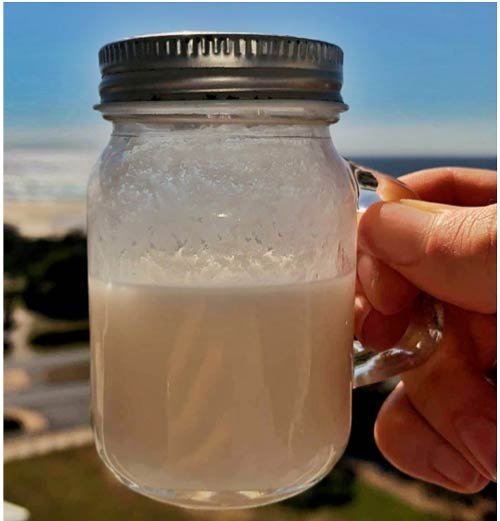
Deodorant generally comes as an aerosol or a roll on, which means it is either plastic or it is contributing to global warming. But there are alternatives that work just as well and are affordable too.
Boobalou offers a wide range of sustainable deodorant alternatives, like powders, deodorant sticks and creams. But if you really want to eliminate all packaging, you can purchase a deodorant bar from lush. The bars are affordable; a large bar costing £7 can last around 6-8 months. To keep them fresh it is best to cut into thirds and store them in a container to prevent them drying out.
It’s also possible to use an Alum Stone as deodorant. These are large crystals from South East Asia, usually Thailand. You run the stone underneath the tap and then rub the crystal on your armpit as you would a roll on. They leave an alkaline film on the skin which makes it hard for bacteria (BO) to grow on. These are hard to source out, they are most likely to be found in zero waste shops. It may sound strange but they really do work!
DIY Deodorant
And then there is always DIY! It is possible to make your own deodorant. It takes only four ingredients and just involves mixing them all together and putting in a container of your choice:
- Coconut Oil
- Baking Soda
- Cornstarch
- Essential Oils (if you want to smell nice)
Check out the instructions here.
Razors
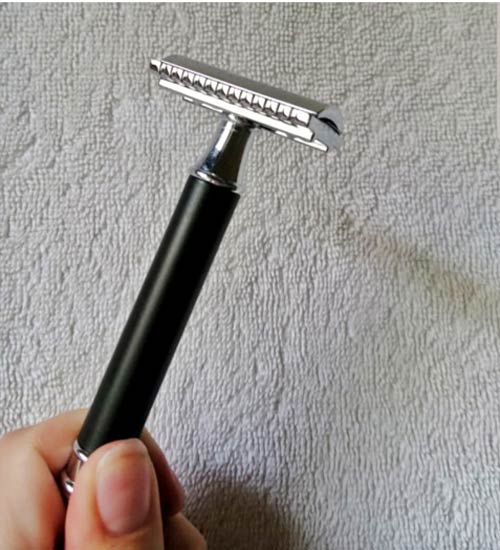
Both men and women are guilty of using those cheap plastic razors that go blunt after a few uses. Some of us use the plastic shavers which have replaceable heads, these are better but still contain plastic, whether it be the packaging or the removable head.
The solution to using less plastic when shaving is one we all already know – safety razors! Safety razors can be found in supermarkets, shops and chemists, and the replaceable razors come in paper and cardboard. An easy switch that is affordable and you don’t compromise on results.
Toilet Paper
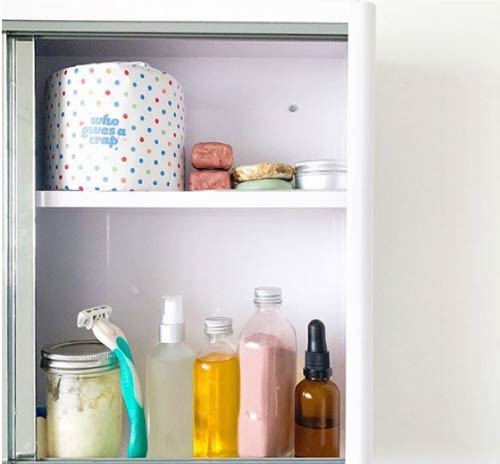
Toilet paper is probably not the first thing that comes into your head when you think about reducing plastic. But aside from the plastic packaging, the harvesting of trees for our toilet paper is not sustainable. The toilet roll industry is worth $30 billion worldwide.
To make toilet paper, trees are cut down and water is used to clean the wood and turn it to pulp. Then chlorine is added to bleach the paper and make it soft – which will eventually make it into our water ways. This is aside from the energy used to manufacture and transport the product. The brands with the worst impact are those which are the ‘super soft’ brands like Charmin.
Americas toilet paper industry is having a massive impact on Canadian forests. 28 million acres have been cut down since 1996. So why aren’t we using toilet paper used from sustainable forests or from recycled materials? Well some brands are! Who Gives A Crap is an environmentally friendly company who donates half of their profits to building toilets for those in need. The rolls come wrapped in paper and in a box, but it is a lot more expensive than your average roll in the supermarket.
Other brands use bamboo, which is a fast growing plant which needs little to no fertiliser, or recycled wood pulp to manufacture toilet paper.
Lotions
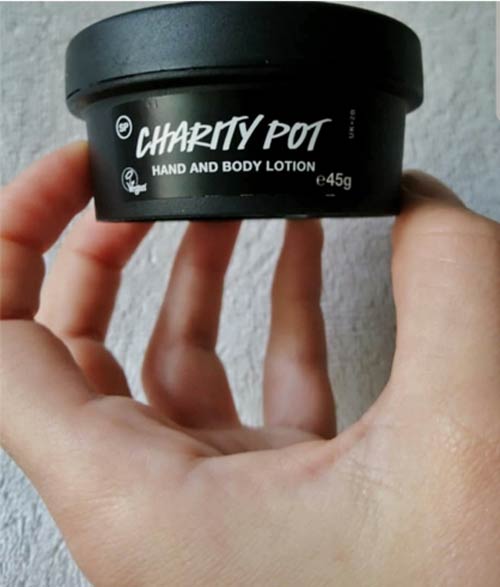
Body lotion is a tough item to reduce plastic on. If there are package free stores near you it is easy to refill your tub, but for most people this isn’t accessible.
Lush sell lotion both in recycled tubs and as a bar which is sort of ‘oily’. You return their plastic tubs to them and they return them to their factory to get reused. On the back of the packaging it says how many times your products packaging has been recycled, it’s quite amazing actually! You can also get package free shimmer bars that work as highlighters.
Package Free Shop fill their metal bottles with lotion and you return the bottle to get it refilled, this works great if you are based in the US. There are many eco brands online which sell lotion in metal tubs which means it can be recycled or reused, like Peace With The Wild.
Face Scrubs, Face Masks and Make Up Remover
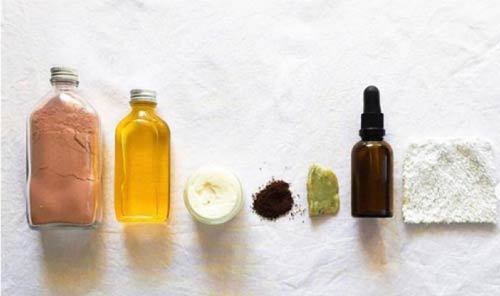
Face Scrubs
Face scrubs removes the dead skin and helps keep your skin healthy. There are many ways to make them at home with the ingredients you already have. Here are some simple recipes that require only two ingredients:
- Oat Scrub: Blend together oats and water
- Lemon and Sugar: Mix the juice of a lemon with sugar. Lemon helps kill bacteria.
- Honey and Brown Sugar: Mix away and apply to face! Honey always leaves your face feeling hydrated
- Rinse with warm water.
Easy!
Face Masks
There are so many web pages and YouTube tutorials on how to make your own face mask instead of buying in a packet. Websites like The Every Girl shows you how to do it on a budget for different skin types. The ingredients range from avocados, pumpkin, yoghurt, honey and turmeric.
Make Up Remover
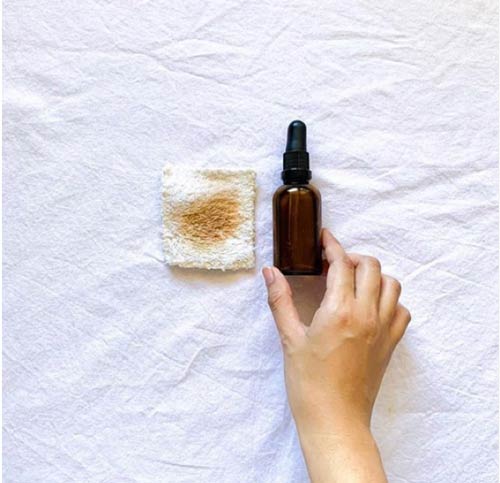
If soap doesn’t budge the make up quick enough, just use an ingredient that we all have at home – olive oil!
Apply the oil to your face like a cleanser, rubbing in circles. Then use a fresh towel or pad rinsed in warm water and start wiping the make up off! It helps reduce blackheads by softening them and its also affordable and available in glass (no plastic!).
Small But Impactful Changes
Many of the options listed in this week’s blog are affordable and easy swaps. You may even be doing them without realising the positive impact that you are having! It can be difficult to reduce your plastic, but making changes in your bathroom is one of the easiest as the products last you a long time and you can prepare, unlike forgetting your bags when you go shopping and having to use plastic ones!
Disclaimer
References in this article to any specific commercial products by trade name, trademark, manufacturer, or otherwise, does not necessarily constitute or imply its endorsement, recommendation, or favouring by the Olive Ridley Project. The views and opinions of authors expressed herein do not necessarily state or reflect those of the Olive Ridley Project and shall not be used for advertising or product endorsement purposes.

